Is it possible to run a dishwasher without salt for the first time?
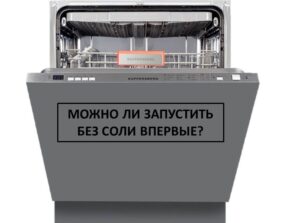 Tap water in most regions of Russia is characterized by excessive hardness. High levels of calcium and magnesium cause scale and lime deposits to form inside dishwashers. This also negatively affects the quality of washing, so PMM owners have to use salt to soften the water.
Tap water in most regions of Russia is characterized by excessive hardness. High levels of calcium and magnesium cause scale and lime deposits to form inside dishwashers. This also negatively affects the quality of washing, so PMM owners have to use salt to soften the water.
The crystals promote the regeneration of the ion exchange resin, which softens the water. Without them, it is impossible to operate the PMM on an ongoing basis. Some users try to run a dishwasher without salt for the first time, while the product has not yet been purchased. Let's figure out whether this is acceptable, how to load the granules into the tank, how often you need to pour them into the container in the future.
Let's run it once without salt
Many users are interested in whether it is necessary to add salt when starting the machine for the first time. It often happens that the device was delivered and connected to communications, but there is no product at home, and you don’t want to run to the store to get it. Will the equipment break down from one cycle without regenerating crystals?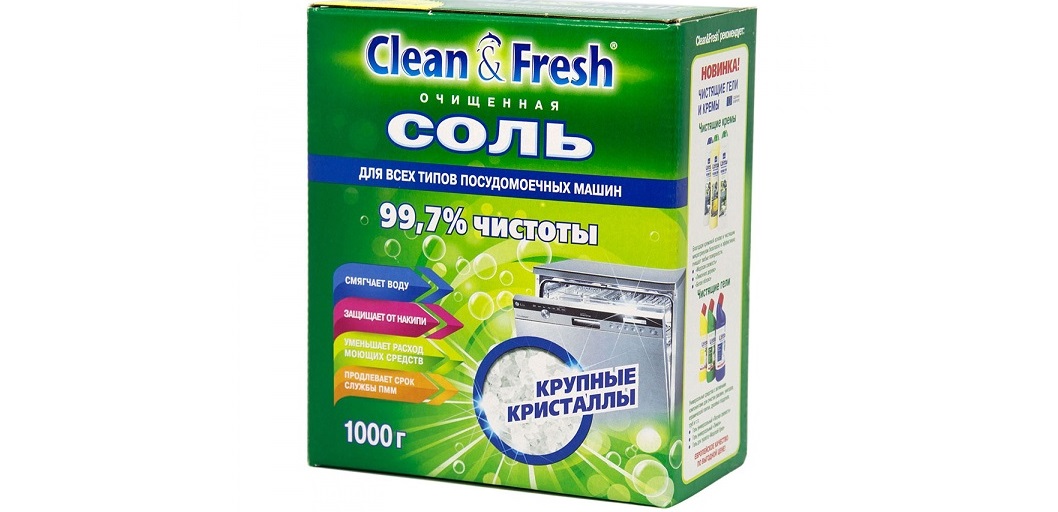
The manufacturer prohibits the systematic use of a dishwasher without regenerating salt. However, the equipment is quite capable of “surviving” a one-time switch-on without granules. Therefore, it’s okay if the first launch takes place with an empty tank, but in the future, be sure to fill the container with a special product.
How to load salt for the first time?
Having purchased special salt, users often do not understand where to pour it. The instructions for any dishwasher describe in detail all the nuances regarding the operation of the device. The manual tells you where the pellet reservoir is located and how to properly fill it the first time.
The compartment for regenerating salt is located at the bottom of the PMM working chamber.
The algorithm will be like this:
- open the dishwasher, remove the lower basket;
- unscrew the container cap;
- pour approximately 1-1.5 liters of water into the tank;
- using a funnel, pour salt into the container to the brim;
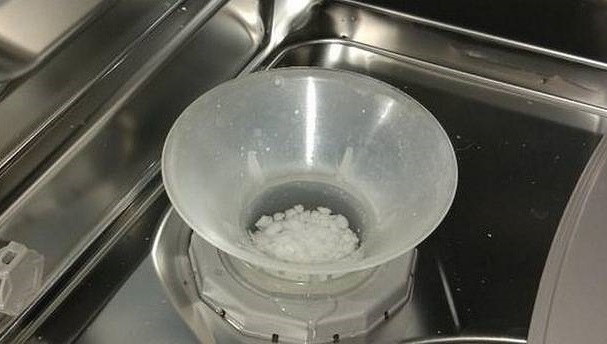
- Wipe the neck of the container and the area around it to remove crystals and salt water;
- screw on the reservoir cap.
The lid of the salt container is quite large, so it will be difficult to find it. You only need to fill the container with water when you start it for the first time. In the future, you should simply pour the granules into the compartment as they are used up.
How much salt do you need?
For the first time, the salt container must be filled under the neck. The granules will displace some of the water, but there is nothing to worry about. The capacity of the tank directly depends on the model of the dishwasher. Some dishwashers hold 800-1000 grams of crystals in the compartment, others - 1.2-1.5 kg of crystals.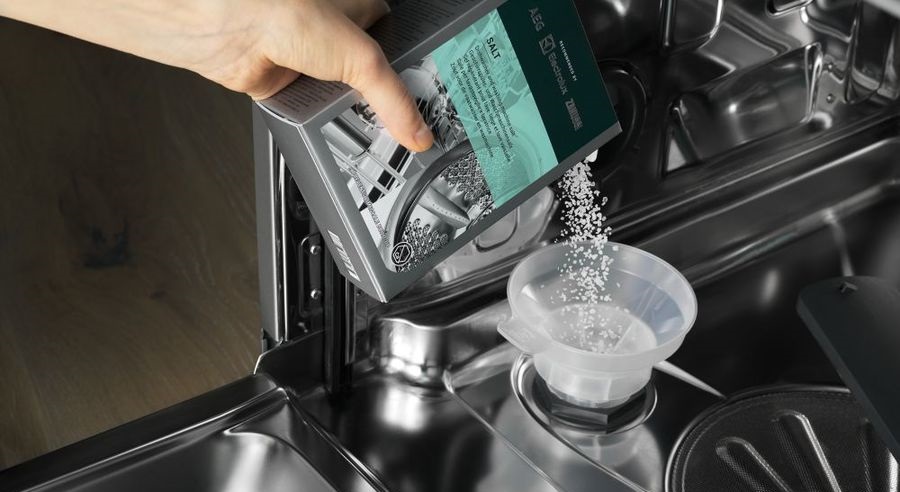
It's okay if there isn't enough salt to fill the tank completely. The granules can be reloaded next time. The main thing is to use special regenerating crystals for dishwashers. It is forbidden to add regular table salt to the container, just to “fill” the compartment to the top.
Regular table salt contains impurities that are detrimental to PMM. These components can spoil the resin in the ion exchanger. Therefore, it is important not to save money, but to use special regenerating salt for dishwashers. The product is inexpensive.
How quickly is salt used up?
The consumption of salt granules is individual in each case. This depends on the level of water hardness in the region.The higher the calcium and magnesium content, the more crystals will be needed to soften the liquid.
You can find out the water hardness in your region by calling your local Vodokanal, or by measuring the indicator yourself using special test strips.
Test strips can be purchased from hardware stores. With some PMM models, for example, Bosch and Samsung, indicators are included. To find out the indicator, you need to dip the plate in water.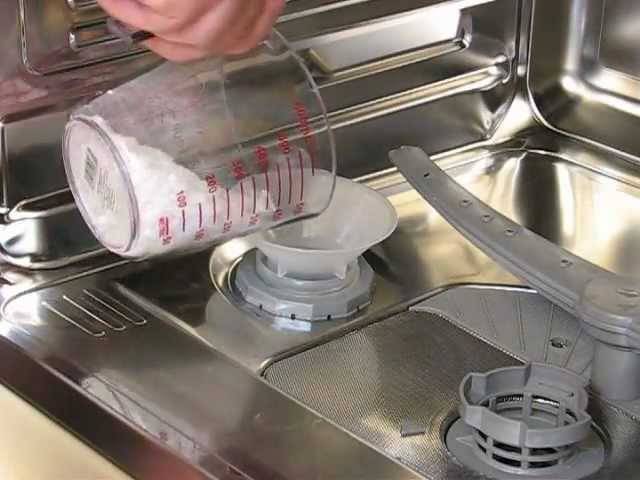
Having found out the hardness of tap water, you need to adjust the softener of the machine. How to do this is described in the instructions for the PMM. The salt consumption will depend on the position the regulator is set to.
Most modern PMM models have a salt indicator - it will light up if there are too few crystals left in the tank. Budget machines do not have this function, and users will have to monitor the amount of granules themselves.
Tips for using salt
The main recommendation from manufacturers is to add salt designed specifically for dishwashers into the reservoir. Otherwise, you can damage the ion exchanger, which is quite difficult to restore. The choice of funds is large - both budget and more expensive options are presented on the market.
Before putting the machine into operation, be sure to set up the softener. If you do not adjust it according to the water hardness level in the region, salt will be used inefficiently. This procedure is simple and will take no more than five minutes.
It is recommended to replenish the salt tank as soon as the indicator lights up. On average, this is every 5-7 months. There is no need to add crystals before each use of the PMM.
There is nothing complicated about using regenerating salt for PMM.It is enough to fill the reservoir with crystals and adjust the softener before putting the machine into operation, and then just periodically add granules. By following simple rules, you will not only protect your dishwasher from scale and lime deposits, but also improve the quality of washing.
Interesting:
Reader comments
- Share your opinion - leave a comment


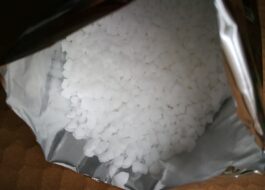
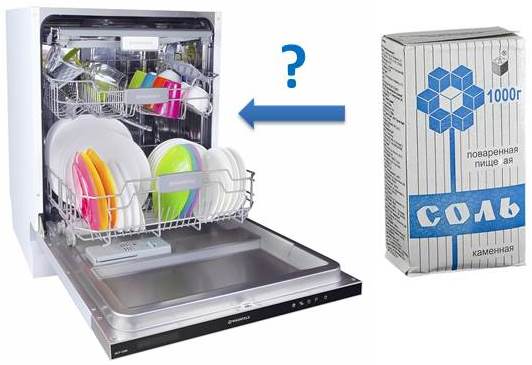

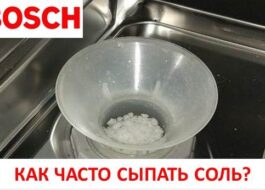















Add a comment